The most amazing thing about Sheol (Hades) is how blatantly obvious God’s Word is on the topic. The truth about Sheol isn’t hidden whatsoever, but people have been hindered from seeing it due to the power of religious tradition and sectarian allegiance.
To illustrate how “blatantly obvious” the Bible is on Sheol, let’s recap the highlights from each chapter of SHEOL KNOW and then conclude. For details on any point simply go to the chapter in question by clicking the chapter link. If you’re not interested in reading the highlights just jump to the final section.
What is Sheol? (The Two Basic Views)
In Chapter One we discovered that there are two basic views of Sheol:
1. Unrighteous souls in Sheol are in a state of constant torment desperately yearning for less than a drop of water for relief, which won’t be granted, while righteous souls hang out with father Abraham in a “paradise” compartment. These two compartments are separated by a great chasm.
2. Souls in Sheol lack God’s breath of life and therefore lie dead until their resurrection. For the unredeemed this resurrection will take place after Christ’s thousand-year reign on earth at the White Throne Judgment where “Anyone whose name was not found written in the book of life (will be) thrown into the lake of fire;” “the lake of fire is the second death” where the unrepentant will suffer “everlasting destruction,” as Paul described it (Revelation 20:11-15 & 2 Thessalonians 1:9).
The sole biblical verification for the first position is a literal interpretation of Jesus’ tale about the rich man and beggar. The second position, by contrast, is supported by 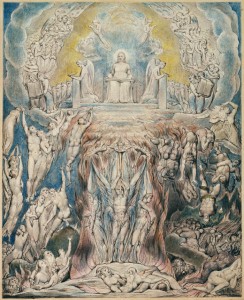 literally hundreds of plain passages, as this study has shown, including God’s own descriptions.
literally hundreds of plain passages, as this study has shown, including God’s own descriptions.
We also saw that both wicked and righteous souls alike went to Sheol in periods preceding the resurrection of Christ. When Jesus was resurrected from the dead justification was made available for the repentant.
We further discovered that a lot of misunderstanding about Sheol can be traced to the translators of the influential King James Bible who subscribed to the curious practice of translating the Hebrew word Sheol as “hell” when it applied to wicked people and as “grave” when it applied to righteous people. In other words, their rendering of ‘Sheol’ in the KJV was determined purely by whether the passage referred to the wicked or the righteous. Scholars agree that there is simply no justification for this lack of uniformity in translating Sheol.
Jacob, Job & Solomon’s View of Sheol
In Chapter Two we observed how these three great men from the Old Testament viewed Sheol, summarized as follows:
1. Sheol is a condition that every spiritually un-regenerated person will experience immediately following physical decease, which included godly men and women in Old Testament periods preceding the ascension of Christ. It includes the rich and the poor, the small and the great, the pure and the profane. In other words, Sheol is the common destiny of anyone who is spiritually dead to God and therefore un-redeemed.
2. Sheol is a condition of unconsciousness, likened unto sleep, where there is no work, thought or knowledge of any kind. It is not a place or state of conscious suffering and misery and it is likened to sleep because everyone will one day be resurrected—i.e. “awoken”—from there, which explains the third point…
3. Sheol is a temporary condition and all consigned to Sheol will ultimately be resurrected.
Sheol in the Book of Psalms, Part I 
In Chapter Three we observed a number of enlightening things about Sheol from the Psalms:
- David and others, like Hezekiah, equated Sheol with death and described it as a place (or condition) where a person couldn’t remember or praise God.
- Other passages from the Psalms reveal Sheol to be a “land of silence” where souls “lie silent” rather than cry out in torment for a tiny bit of water or enjoy blissful communion with father Abraham.
- Other verses in the Psalms describe Sheol as a “Pit” in the underworld, derived from the Hebrew bowr, which can also be translated as “well,” “cistern” or “dungeon.” As such, Sheol is the well of dead souls or dungeon in the underworld where lifeless souls ‘await’ resurrection. It’s the immaterial graveyard of souls.
- Elsewhere we discovered that Sheol is a condition of the human soul—the mind—and not of the spirit or body.
- Amazingly, we even discovered that the unrighteous are “appointed for Sheol” “like sheep” and explored the theological ramifications of such a statement.
- Lastly we observed David declaring that the LORD would “ransom” his soul from Sheol and take him to Him. ‘Ransom’ means to “redeem the captive.” This shows that righteous souls would ultimately be resurrected from Sheol at some point after Jesus’ resurrection wherein justification for the repentant was acquired.
Sheol in the Book of Psalms, Part II
In Chapter Four we continued looking at Sheol in the book of Psalms and explored many questions, like: Why would David pray for his ex-buddy to go to Sheol if, in fact, it was a fiery subterranean torture chamber?
We also explored the biblical metaphor of “sleep” to describe the condition of dead souls in Sheol, which was a figure of speech even Jesus used to describe people who passed away. We discovered why this metaphor is used and that it differentiates Sheol, the first death, from the lake of fire or Gehenna, which is the second death (Revelation 20:6,14, 21:8 & 2:11): Everyone will be resurrected from the first death (Sheol), but no one will be resurrected from the second death (Gehenna). This is why the second death is described as an “eternal punishment” (Matthew 25:46) or “everlasting destruction” (2 Thessalonians 1:9) because there is no hope of recovery or resurrection from it—it’s a fatal destruction of such complete and final magnitude that it lasts forever and ever. Sheol, the first death — by contrast — is a temporary condition from which every soul will be “awoken;” that is, resurrected.
Sheol in the Book of Proverbs
In Chapter Five we explored the nature of Sheol as detailed in the book of Proverbs and discovered a number of things:
- Sheol and death are synonymous concepts in that unredeemed people who die go to Sheol and experience the condition of death, the state of non-being. The God-breathed Scriptures repeatedly equate Sheol with death and destruction, not fiery conscious torture.
- Sheol is a condition to be avoided as long as possible, which utterly contradicts the position that righteous souls go to Sheol and become bosom buddies with Abraham in some nether-paradise.
- Sheol is never satisfied with its increasing population of dead souls, yet it will one day stop receiving souls, and every lifeless resident there will be resurrected to face judgment; in fact, Sheol itself—that is, “Hades”—will ultimately be thrown into the lake of fire, as shown in Revelation 20:11-15.
The Prophets and Sheol
In Chapter Six we looked at what the prophets had to say about the nature of Sheol, including the longest and most detailed passage on the subject where the LORD himself describes the nature of Sheol in explicit terms of death, not perpetual conscious roasting or blissful comfort with Abraham. As such, this passage coincides with the multitude of other biblical texts that describe Sheol in clear terms of death—the graveyard of dead souls in the nether realm. 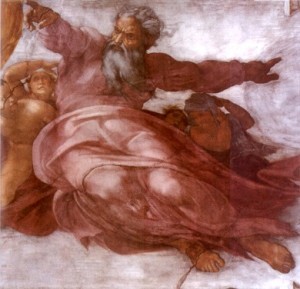
We took note that the LORD Himself—YHWH—was speaking in this long passage, as well as a few other texts, and God described Sheol in explicit words of death, which disproves the unsound theory of “progressive revelation.” This theory was concocted by advocates of eternal torture in order to unsoundly write off the multitudes of passages that support Sheol being what it is: The soulish graveyard in the heart of the earth.
The erroneous theory of “progressive revelation” is based on the idea that there was an evolution of understanding concerning Sheol and that Jesus’ story of the rich man and beggar is the culminating revelation. We observed that this desperate theory can be discarded for a number of reasons: 1. There is no “evolution of understanding” concerning Sheol in the Bible; all the myriad passages point to Sheol being the realm of the dead in the nether-realm where dead souls “rest” in death “awaiting” their resurrection. Only a literal reading of Jesus’ Parable of the Rich Man and Lazarus contradicts these other passages. 2. God Himself is speaking in the longest, most detailed passage on Sheol in the Bible, not to mention three other passages, and what he says corresponds to the position that Sheol is the graveyard of dead souls in the underworld where unredeemed souls lie dead. Does the LORD need “progressive revelation” on the nature of Sheol or did he always know precisely what it is and the state of souls there? 3. All the evidence points to Jesus’ tale being a parable—a symbolic story—not a literal account of life in Sheol, which is further proven in Chapter Eight.
Various Biblical Descriptions of Sheol/Hades
In Chapter Seven we looked at some enlightening Old Testament descriptions of Sheol, such as it being contrasted with the “land of the living.” If life on earth is the land of the living then it naturally follows that Sheol is the land of the dead, which is precisely how the Bible defines it—”the realm of the dead.”
We also saw how Sheol is often paralleled with the physical grave or tomb; and also dust, which is what corpses reverts to. It goes without saying that graves, tombs and dust signify death, not fiery conscious torture.
One of the most informative descriptions of souls in Sheol is that of being “no more,” meaning they don’t exist in any conscious sense whatsoever.
Another enlightening description is that of souls being “gathered to his people” or “resting with his fathers,” the latter being used in reference to the wickedest kings of Israel and Judah. If Sheol is a state of roasting torment for the unrighteous then surely these thoroughly wicked kings would suffer accordingly, but that’s not what the Bible teaches. Their dead souls went to Sheol and simply “rested with their fathers” until their resurrection and judgment in the distant future.
Jesus’ Parable of the Rich Man and Lazarus
In Chapter Eight we examined Jesus’ imaginative tale of the rich man and beggar and discovered that it’s clearly a symbolic story—a fantastical parable—and not a literal account of two men in Sheol after they die. For one thing, it comes in a long line of parables and opens with the same exact words as the previous parable. Secondly, it clearly uses fantastical and symbolic language. Thirdly, if taken literal it contradicts what the entire rest of the Bible details about the nature of Sheol, including Yahweh’s very own unmistakable descriptions (!). Fourthly, the tale is a classic reversal of fortunes story that mimics the Pharisee’s Hellenistic belief in the immortality of the soul apart from redemption in Christ. Fifthly, it rebukes the corruption of the legalistic Judaic leaders, including the Pharisees’ greed. And, sixthly, it amazingly symbolizes the main theme of the New Testament—the end of the old covenant and the beginning of the new wherein the Gentiles have access to spiritual riches through the gospel while unrepentant Hebrews languish in unbelief.
The New Testament and Sheol/Hades
In Chapter Nine we explored numerous direct and indirect references to Sheol in the New Testament and found nothing that contradicts the Old Testament position. In fact, we saw how over and over again the New Testament explicitly says that Jesus died for our sins and was raised to life for our justification, often in every chapter.
Interestingly, with all these references to Christ’s death there’s mysteriously zero mention of Jesus being conscious in Sheol (Hades), whether hanging out with Abraham in bliss or suffering constant roasting torture without a bit of water for relief. No, the Messiah died and his dead soul was in the “heart of the earth” for three days before being miraculously resurrected for our justification. The “heart of the earth” is a reference to Sheol, which is the “pit” in the underworld where dead souls are housed until their resurrection.
Furthermore, when Mary and Martha’s brother, Lazarus, died Jesus plainly said he was “sleeping” in death, not hanging out in paradise with Abraham, not to mention when Lazarus was raised to life absolutely nothing is said about his being raised from this curious “paradise compartment” of Sheol. Why? Because it’s a false doctrine. It’s the same thing with the death and resurrection of Jairus’ daughter, detailed three times in the Gospels.
The Believer’s Intermediate State
While Chapter Ten is not included in this web-version of SHEOL KNOW, you can read it here. We looked at the believer’s intermediate state between physical death and bodily resurrection and saw that the souls of believers do not die—that is, go to Sheol—because they’re born-again of the imperishable seed (sperm) of Christ by the power of the Holy Spirit. As such, death—Sheol—has no power over believers and they consequently go straight to be with the Lord in heaven to serve and await their bodily resurrection, which takes place at the Lord’s return for his Church, i.e. the Rapture.
The fact that believers are alive in heaven in a disembodied state awaiting their bodily resurrection is so blatantly detailed in the New Testament that it’s baffling some people argue otherwise. This just goes to show the power of tradition and denominational bias—they override plain Scripture when there’s a contradiction, no matter how obvious the truth.
Resurrection from Sheol
In Chapter Eleven we saw that unredeemed souls will be resurrected from Sheol to face the Great White Throne Judgment. If anyone’s name is not found in the book of life he or she will be cast into the lake of fire to suffer the “second death.”
As for the souls of Old Testament righteous people, we amazingly discovered that many of these were resurrected back to temporal life on earth when Jesus was resurrected. When they eventually physically died their souls, as believers, would go to heaven with the promise of a future bodily resurrection, as is the case with all believers. As for other Old Testament saints, they will be resurrected and judged when Jesus returns to the earth to establish his millennial kingdom, although I leave room for the possibility that their souls were resurrected from Sheol and ascended to heaven when Christ ascended.
We also discovered that the resurrection of the righteous, called the “first resurrection,” takes place in stages corresponding to the allegory of a biblical harvest—firstfruits, general harvest and gleanings. Jesus was the “firstfruits,” while the Rapture refers to the main harvest and gleanings refer to the resurrection of Old Testament saints and Tribulation martyrs, not to mention any righteous people who die during the Millennium.
Conclusion on Sheol (Hades)
This study proves beyond any shadow of doubt that Sheol is not a place of conscious existence in the nether-realm where people are either tormented in flames crying out for a tiny bit of water or, if they’re righteous, in a nether paradise chummin’ around with father Abraham. This ludicrous error can be traced to a literal interpretation of Jesus’ parable of the rich man and beggar, which contradicts the entire rest of the Bible. The very fact that a literal interpretation of this tale is at variance with the rest of the Bible shows that it was never meant to be taken literally, but rather figuratively.
God’s Word overwhelmingly supports the view that Sheol is the world of the dead in the nether realm where dead souls lie in death ‘awaiting’ their resurrection. In other words, it’s the graveyard of dead souls. This is so blatantly obvious in Scripture it’s a wonder that so few Christians see it, but this explains the power of religious tradition and sectarian allegiance. When unrighteous souls are eventually resurrected from Sheol they will be judged and “Anyone whose name is not found written in the book of life [will be] thrown into the lake of fire” “The lake of fire is the second death” (Revelation 20:11-15).
(To understand the nature of the second death go to HELL KNOW).
It goes without saying that making sure your name is written in the Lamb’s book of life is of the utmost importance. Any other earthly pursuit, no matter how important, is like playing trivial pursuit by comparison.
Amen and Praise God!
PREVIOUS CHAPTER EPILOGUE: Eternal Life
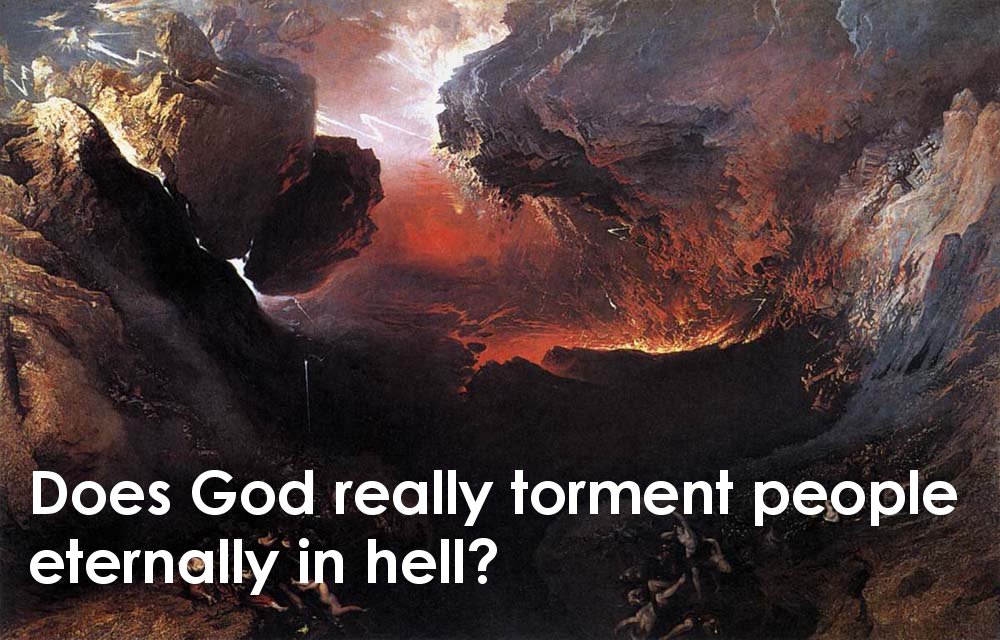
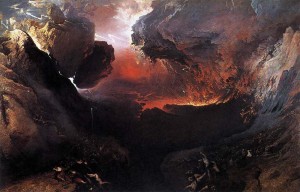
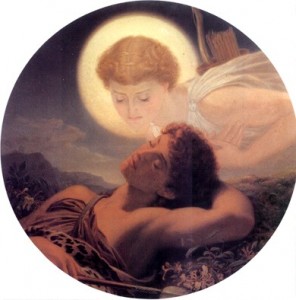
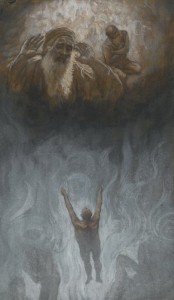
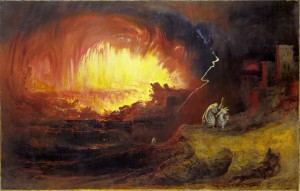
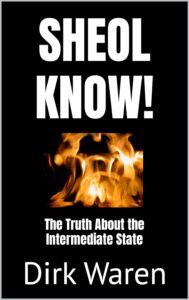
Frank
Hello,
If Jesus was sleeping in Sheol, I am confused about Peter’s brief reference to Jesus’ preaching to the spirits in prison, killed by the Flood, after he died on the cross. They and he were apparently awake and conscious?
I can’t recall ever hearing a clear explanation of what that reference is about or even what it means.
Everything I’ve ever read about it just sounds like guessing.
Maybe it’s just supposed to be mysterious but I have to say I don’t get it and have only guesses about what my theology is supposed to be on Jesus doing that.
Dirk Waren
Hi Frank.
Good to hear from you.
That particular passage is addressed in Chapter Nine of SHEOL KNOW.
Here’s that section copied & pasted for your convenience:
First Peter 3:18-20 is a particularly weak “proof text” for those who say that Sheol is a place of consciousness because anyone making this argument didn’t bother to really read the passage:
Verse 18 says that Christ “was put to death in the body but made alive by the Spirit.” Of course, we know that Jesus wasn’t “made alive by the Spirit” — that is, resurrected — until three days after his crucifixion. In the original New International Version, verses 19-20 read like so: “through whom also he [Jesus] went and preached to the spirits in prison who disobeyed long ago when God waited patiently in the days of Noah while the ark was being built…” As you can see above, the newer edition of the NIV cites these verses as such: “After being made alive, he went and made proclamation to the imprisoned spirits — to those who were disobedient long ago when God waited patiently in the days of Noah while the ark was being built.” With this in mind, let me stress five things about this passage:
1. Clearly, Christ didn’t preach to these “spirits in prison” until after his resurrection and likely before his appearance to his disciples, but certainly before his ascension.
2. The “imprisoned spirits” spoken of in the passage refer to fallen angels or demons that were permanently bound due to their extraordinary wickedness. Elsewhere in the Scriptures we see that unclean spirits resist such an imprisonment (Luke 8:31). Ultimately, they will be cast into the lake of fire as their eternal abode and punishment (Matthew 25:41 & Revelation 20:10).
3. What is this “prison”? Most likely what the New Testament describes as “the Abyss,” the furnace-like pit where evil spirits are imprisoned, not human beings. See Luke 8:31, Revelation 9:1-2 and 20:1-3 for verification. As noted in the previous point, the mass of unclean spirits known as Legion begged Jesus not to sentence them to the Abyss (Luke 8:31). Jude 1:6 also refers to this prison for fallen angels.
4. What did the Lord preach to these spirits in prison after his resurrection? Jesus’ resurrection was an incredible moment of victory wherein the mighty Messiah “made a public spectacle of” the powers of darkness, which is illustrative of a Roman general parading his enemies through the streets of Rome (Colossians 2:15 & Ephesians 1:19-22). The Lord no doubt proclaimed this crushing victory to these filthy losers and reminded them of their impending judgment and condemnation to the lake of fire. Think of a football player making an incredible touchdown in a championship game and the ensuing victory celebration, but times it to the nth degree for Jesus Christ’s triumphant resurrection.
5. Verse 20 shows that these impure spirits have been captive to the Abyss since the time of Noah and therefore applies to the “sons of God” from Genesis 6:1-4, which coincides with 2 Peter 2:4 and Jude 1:6. These evil spirits were sentenced to this prison because their wickedness overstepped the parameters of the Sovereign LORD’s tolerance, which helps explain why, after 120 years of Noah’s preaching while building the ark, only seven of his family members believed in the LORD. No one else in the human race could be convinced because of the vile anti-God activity of these spirits (not that this discounts human will, of course). God bound these wicked spirits in the Abyss until their final judgment.
As you can see, 1 Peter 3:18-20 in no way supports the idea that people are conscious in Sheol, including Jesus Christ who spent three days there — dead — until his awesome resurrection and victory over the kingdom of darkness.
Johanna
Thank you so much for your diligent and exhaustive study on hell. I am especially grateful because it gives a truthful picture of God as just, merciful and loving. It has helped me a lot!
Dirk Waren
You’re very welcome, Johanna. Thanks for the feedback.